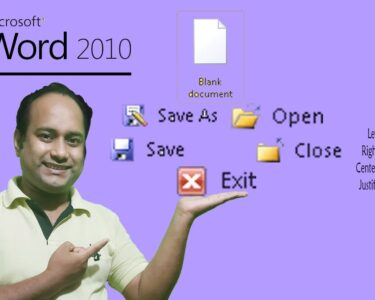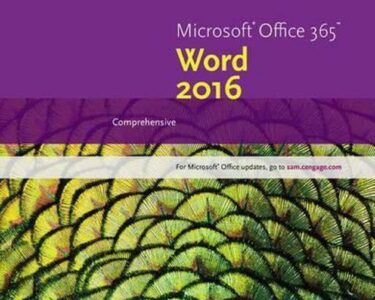Comprehensive Microsoft Word Learning
Microsoft Word is a powerful word processing software application that is widely used for creating, editing, and sharing documents. Mastering Microsoft Word can greatly enhance your productivity and efficiency in various settings, including professional, academic, and personal. This article provides a comprehensive guide to Microsoft Word learning, covering essential concepts, features, and tips to help you become proficient in using this software.
Getting Started with Microsoft Word
- Installation: Download and install Microsoft Word from the Microsoft website.
- Creating a New Document: Click on "File" > "New" to create a blank document.
- Navigating the Interface: Familiarize yourself with the Ribbon, Quick Access Toolbar, and Status Bar.
Basic Text Editing
- Text Formatting: Use the font, size, color, and alignment options to format your text.
- Paragraph Formatting: Adjust paragraph indents, spacing, and alignment to create visually appealing documents.
- Inserting Objects: Include images, tables, charts, and other objects to enhance your documents.
Document Layout
- Page Setup: Set margins, page orientation, and paper size to create a professional layout.
- Sections: Divide your document into different sections with distinct page settings and headers/footers.
- Headers and Footers: Add page numbers, titles, or other information to the top or bottom of each page.
Collaboration and Sharing
- Track Changes: Allow others to review and make suggestions on your documents while keeping track of changes.
- Comments: Add annotations and comments to specific sections of the document for discussion and feedback.
- Sharing: Save your documents in various formats and share them via email, cloud storage, or collaboration platforms.
Advanced Features
- Templates: Use pre-designed templates to create professional-looking documents quickly and easily.
- Macros: Automate repetitive tasks to save time and increase efficiency.
- Mail Merge: Personalize mass mailings by merging data from a data source.
- Forms: Create interactive forms for data collection, surveys, and questionnaires.
Tips for Effective Word Usage
- Use Headings and Styles: Structure your document logically using headings and apply styles to maintain consistency and enhance readability.
- Master Keyboard Shortcuts: Learn keyboard shortcuts for common actions to speed up your workflow.
- Proofread Carefully: Use the spelling and grammar checker to ensure your writing is accurate and error-free.
- Practice Regularly: The key to proficiency is consistent practice. Create different types of documents and experiment with various features.
- Explore Resources: Utilize Microsoft’s online help, tutorials, and community forums for additional support and learning materials.
Conclusion
Learning Microsoft Word is an essential skill for anyone who works with text-based documents. By following the steps outlined in this article, you can build a solid foundation in Microsoft Word and unlock the full potential of this powerful software. Remember to practice regularly, explore advanced features, and utilize available resources to become a proficient and efficient Microsoft Word user.


